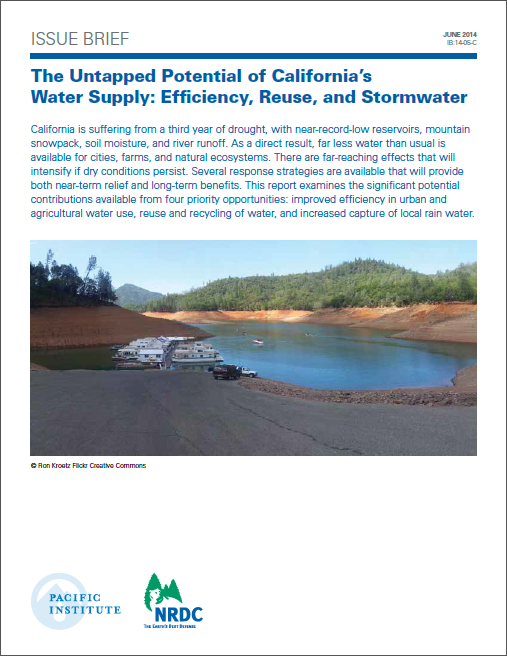The Untapped Potential of California’s Water Supply: Efficiency, Reuse, and Stormwater – Issue Brief

The Untapped Potential of California’s Water Supply: Efficiency, Reuse, and Stormwater – Issue Brief
Overview
Increased pressures on California’s water supply, including from population growth and intense periods of drought exacerbated by climate change, are leading to the overuse of surface water and groundwater. But with existing technology and conservation methods, the state can take vital steps to improve its resilience to drought and plan for a more sustainable water future. This issue brief, produced in collaboration with the Natural Resources Defense Council, is a statewide analysis of the potential for improved efficiency in agricultural and urban water use, water reuse and recycling, and increased capturing of local rainwater.
Resources
In this Series
Issue Brief: Agricultural Water Conservation and Efficiency Potential in California
Issue Brief: Urban Water Conservation and Efficiency Potential in California
Issue Brief: Stormwater Capture Potential in Urban and Suburban California
Issue Brief: Water Reuse Potential in California
Fact Sheet: A Sustainable Water Future for California

